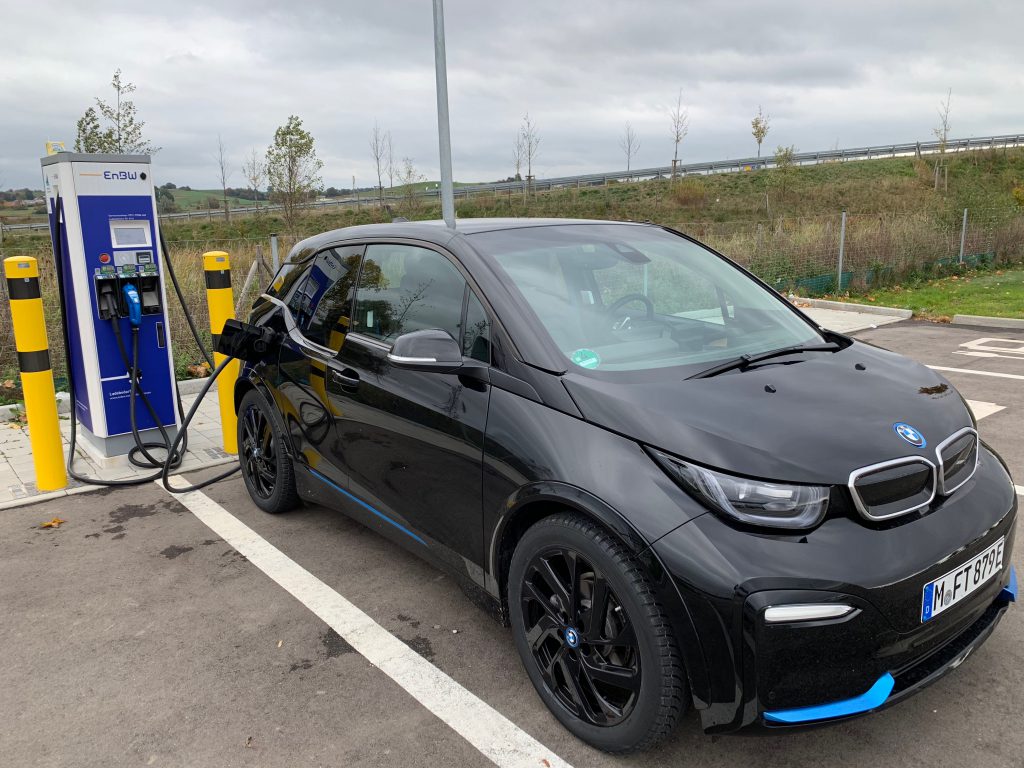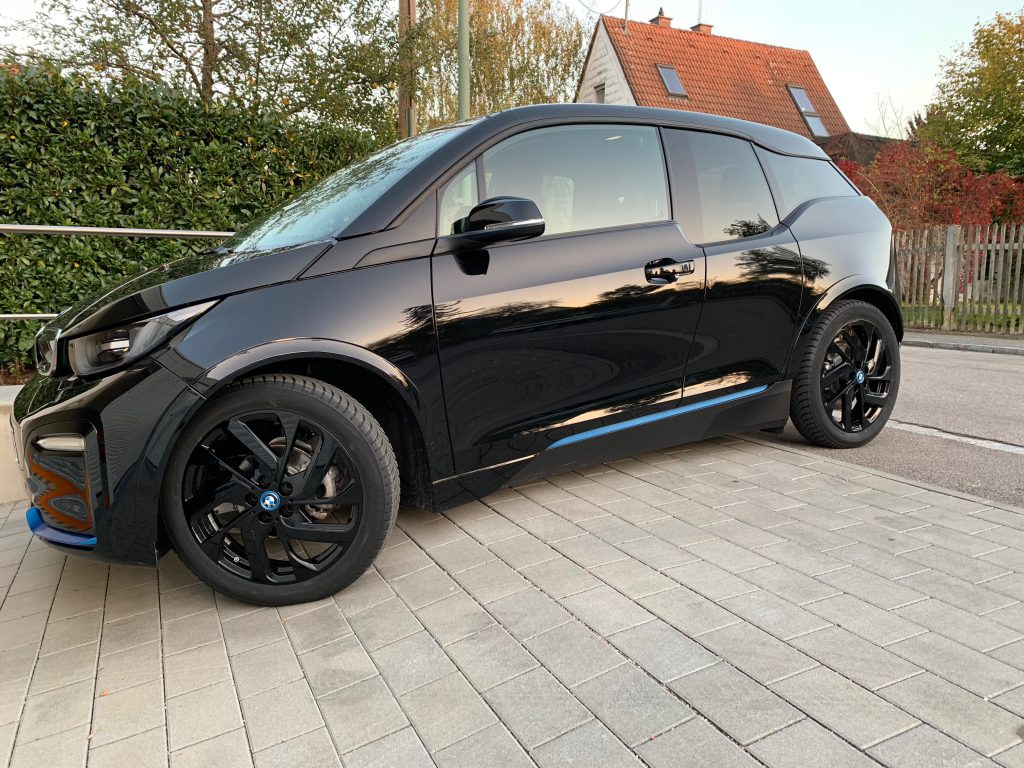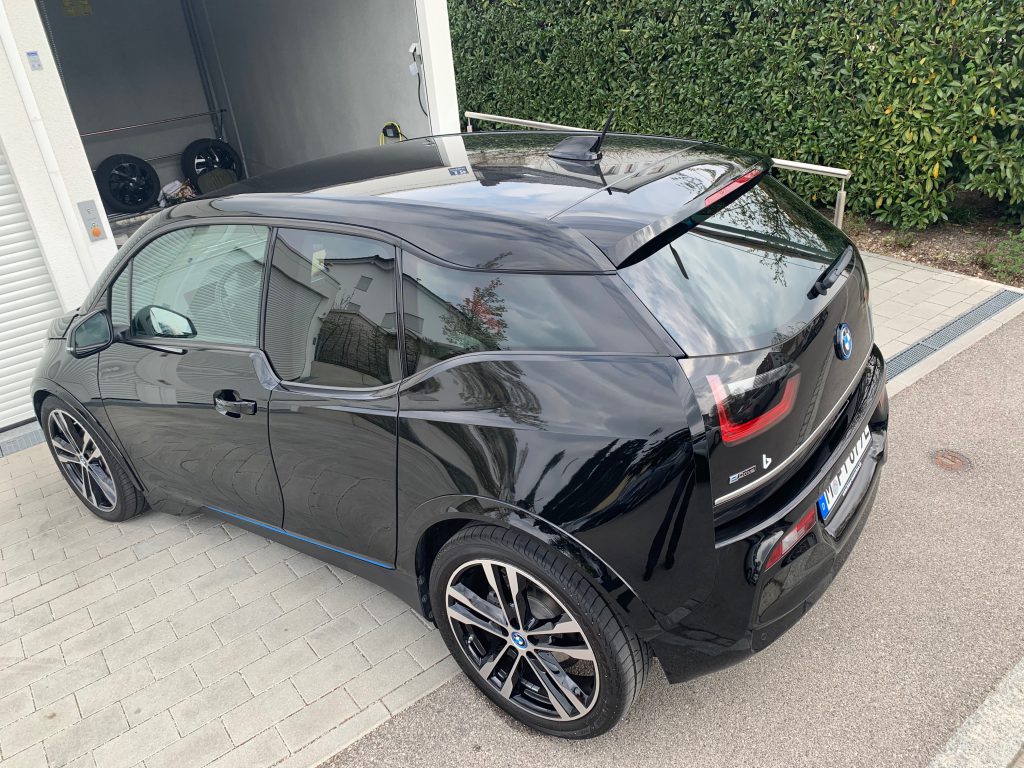
After more than 10.000km in one year+, it is time to stop and review my experience with my BMW i3s. My first ever fully electric vehicle. Would I buy it (or another EV) again? Can I recommend the i3? To everyone?
How about BMWi3s real life range?
Let’s start with the most discussed topic when talking about EVs, the range. I own a 2018 BMW i3s with the 94 Ah battery pack. The official range depends on the used metrics / standards but let’s skip this and move on to the real world.
First you need to learn that a remaining range of 50km does not mean you need to go look for a „gas station“ like you would probably do in a ICE Car. In my case it just means you can go another 50km to work and back (so probably another week) before you just plug your car in during the night to get it fuelled up again over night. And it is really that easy, if you have a garage and/or a workplace where you can just plug in (in my case even for free at work).
Second thing is, the range really depends on external factors. Most importantly the temperature. Between 15 and 20 degrees Celsius the range is at its best as you don’t need any heating or air conditioning. So you can really do more than 200km when fully charged. But then there is more. If you take the Autobahn and go at full speed (160km/h in case of the i3S) you will see the battery drowning fast. This might decrease your range up to 50% leaving you with app. 100km instead of 200km.
Basically that is the same with an ICE Car, but you won’t notice it that drastically. On the one hand because it is not that bad if your range drops from 800km to 400 and on the other hand the efficiency of an ICE is always worse than with an EV and therefore the general loss on temperature etc. will stay almost the same if going fast or not. Therefore your real loss in range dependant on speed only might result in a real drop from 800 to maybe 600km.
But back to the EV world. The BMWi3s is not really built for a long trip on the German Autobahn. Is it? To be clear, it is no problem to jump on the Highway/Autobahn and kick it to 160km/h. It is even fun. And I did the trip Munich -Stuttgart – Munich (app 450km) in one day a couple of times. You just have to plan a bit better. It starts with including a quick brake eg. around Ulm (between Munich and Stuttgart). This is not a bad thing as the trip usually is quite busy or you hit a traffic jam and it takes at least 3-4 hours to get there. During a 4h drive, a break of 20 minutes is really not a bad idea.
And during your Meeting in Stuttgart you have to find a charging spot as well. But when taking this into consideration, the 450km trip on one day is absolutely doable.
Let’s be clear, the BMW i3s is a city car with highway qualities
So you CAN always hit the Autobahn, but the City is the best place for the i3. On every light, you can easily shock a Porsche when the light is turning to green. The i3s is quicker from the line than most sports cars. Even in comparison to the highly potent BMW M3 the i3s will win. Until 60 km/h. See here:
Can the BMW i3s replace a family car?
That really depends. If you just need to bring your family of 4 around the city, the i3(s) will do a perfect job. If you want to go on holiday… you might want to send your luggage upfront via mail 😉
But the daily usage as a car to bring your kids to school or the smaller ones to the Kindergarden, the concept is ideal. Even though the split doors are a bit unusual and in small parking spots not really helpful, at the same time putting a small child in the back into a child’s seat, is really easy.
And in the trunk you have enough space for some luggage, even a compact stroller (like in our case the Bugaboo Bee) will fit in there.
What’s the cost of driving though?
Hard to answer. But in my case, where I can charge for free at work (and so can you for example during your visit at ALDI or other free charging spots, the i3 is really cheap to drive. Even if you use a quick charger on the highway from time to time, it is still cheap compared to a visit at the gas station. If you really want to have
A real problem of charging is the still unclear pricing model. You often pay by time not power used. And a quick charger with 50 kw is more expensive than a regular 20 kw charger. The use of these chargers is again really easy. If you register at 1-2 providers (BMW Charge now & Plugsurfing for me) you can charge by using the app or even easier by swiping a RFID chip in front of the charging station.
Pricing and recommended features
The BMW i3s is not cheap. But well, it is a BMW. And you also pay for high tech like the light weight carbon roof and the eco friendly Interieur (recycled bottles as a basis for some parts or leather that is treatened with oil rather than any chemicals).
The BMW i3 starts at 38.000€ the i3s at 41.600€. And I would definitely go for the „s“. The additional power, the better looks (lowered and a bit broader as well) are worth it to me. I also like the leather interieur and the heat pump that gives you more range in a big temperature range. The Navi Professional is also not cheap (+2.000€) but when you used it once you don’t want to miss it again.
Would I recommend to buy the BMW i3s to anyone?
I would say, the BMW i3s is a perfect car for anyone who travels most of the time within a City radius. If you need to do Munich – Hamburg (app 800km) regularly, the answer is no. But for most of us, the 200km range is no problem at all. When you can charge the car in your own parking spot or at work, the BMW i3s is a great car. And to me – honestly – the sheer driving pleasure (and the face of the Porsche driver in the back mirror after a quick sprint at the lights) was the real reason to buy this car. I love it. Even though I also understand the „need“ for a straight 6 cylinder like in a Z4 M40i 🙂





